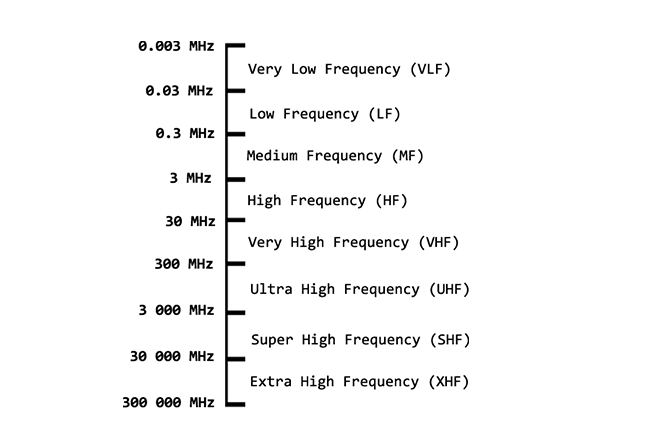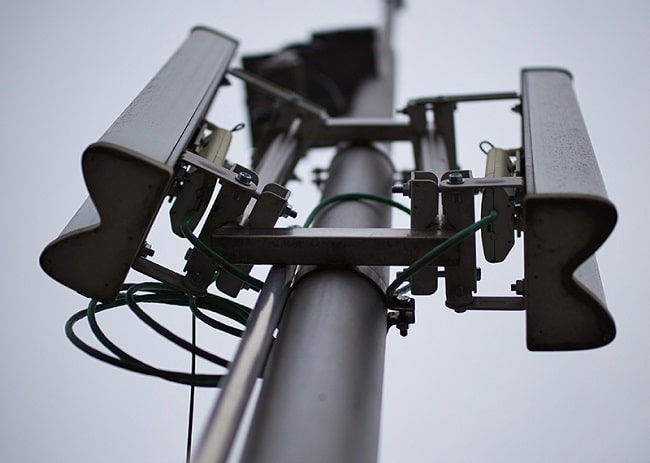Introduction:
In the present days, wireless communication system has become an essential part of various types of wireless communication devices, that permits user to communicate even from remote operated areas. There are many devices used for wireless communication like mobiles, Cordless telephones, GPS, Wi-Fi, satellite television and wireless computer parts. Current wireless phones include 3 and 4G networks, Bluetooth and Wi-Fi technologies.
Wireless transmission is a form of unguided (Media, in which the signals are not guided through a solid medium, are known as unguided media) media. Wireless communication involves no physical link established between two or more devices, communicating wirelessly. Wireless signals are spread over in the air and are received and interpreted by appropriate antennas.
When an antenna is attached to electrical circuit of a computer or wireless device, it converts the digital data into wireless signals and spread all over within its frequency range. The receptor on the other end receives these signals and converts them back to digital data. There are several methods which are in use to send electromagnetic energy through air. These methods are as follows:
Satellite Communication:
Satellite communication is one type of self contained wireless communication technology, it is widely spread all over the world to allow users to stay connected almost anywhere on the earth. When the signal (a beam of modulated microwave) is sent near the satellite then, satellite amplifies the signal and sent it back to the antenna receiver which is located on the surface of the earth. Satellite communication contains two main components like the space segment and the ground segment.The ground segment consists of fixed or mobile transmission, reception and ancillary equipment and the space segment, which mainly is the satellite itself.
Wi-Fi:
Wi-Fi is used by various electronic devices like smart phones, laptops, etc.In this setup, a router works as a communication hub wirelessly. These networks allow users to connect only within close proximity to a router. Wi-Fi is very common in networking applications which affords portability wirelessly. These networks need to be protected with passwords for the purpose of security, otherwise it will access by others.
Bluetooth Technology :
The main function of the Bluetooth technology is that permits you to connect a various electronic devices wirelessly to a system for the transferring of data.Cell phones are connected to hands free earphones, mouse, wireless keyboard. By using Bluetooth device the information from one device to another device. This technology has various functions and it is used commonly in the wireless communication market.
Radio Transmission:
Radio frequency is easier to generate and because of its large wavelength it can penetrate through walls and structures alike.Radio waves can have wavelength from 1 mm – 100,000 km and have frequency ranging from 3 Hz to 300 GHz. Radio frequencies are sub-divided into six bands.
Lower frequencies such as VLF (Very Low Frequency), LF (Low Frequency), MF (Medium Frequency) bands can travel on the ground up to 1000 kilometers, over the earth’s surface.
(Electromagnetic waves were predicted theoretically by James Clerk Maxwell in 1864, demonstrated by Heinrich Hertz in 1888, and first used for telegraphy by Guglielmo Marconi in)

Microwave Transmission:
Electromagnetic waves above 100 MHz tend to travel in a straight line and signals over them can be sent by beaming those waves towards one particular station. Because Microwaves travels in straight lines, both sender and receiver must be aligned to be strictly in line-of-sight. Microwaves can have wavelength ranging from 1 mm – 1 meter and frequency ranging from 300 MHz to 300 GHz.
Infrared Transmission:
Infrared wave lies in between visible light spectrum and microwaves. It has wavelength of 700-nm to 1-mm and frequency ranges from 300-GHz to 430-THz. Infrared wave is used for very short range communication purposes such as television and it’s remote. Infrared travels in a straight line hence it is directional by nature. Because of high frequency range, Infrared cannot cross wall-like obstacles.
Light Transmission:
Highest most electromagnetic spectrum which can be used for data transmission is light or optical signaling. This is achieved by means of LASER. Because of frequency light uses, it tends to travel strictly in straight line.Hence the sender and receiver must be in the line-of-sight. Because laser transmission is unidirectional, at both ends of communication the laser and the photo-detector needs to be installed. Laser beam is generally 1mm wide hence it is a work of precision to align two far receptors each pointing to lasers source. Lasers cannot penetrate obstacles such as walls, rain, and thick fog. Additionally, laser beam is distorted by wind, atmosphere temperature, or variation in temperature in the path.
Advantages & Disadvantages:
Advantages:
- Any data or information can be transmitted faster and with a high speed.
- Maintenance and installation is less cost for these networks.
- The Internet can be accessed from anywhere wirelessly.
- It is very helpful for workers, doctors working in remote areas as they can be in touch with medical centers.
Disadvantages:
- An unauthorized person can easily capture the wireless signals which spread through the air.
- It is very important to secure the wireless network so that the information cannot be misused by unauthorized users.
Category: Networking
on: 24 Jan 2019
on: 29 Oct 2023
Featured posts
You may like these posts.
What is 5G Network? It's time to upgrade your mobile?
5G is a next-generation high-speed Mobile network connection, that replaces our 4G LTE network connections. Samsung Galaxy S10 5G, first 5G supported mobile.

Programming Generations - 1GL, 2GL, 3GL, 4GL, 5GL, 6GL:
A programming language is a set of written symbols that instructs the computer hardware to perform specific tasks. Programming language consists of a vocabulary.

Network Security & It's Protection Methods:
Networking offers endless possibilities and opportunities, along with convenience. But this convenience and endless benefits are not free from risks.
What's Next?
We've now entered the finance section on this platform, where you can enhance your financial literacy.